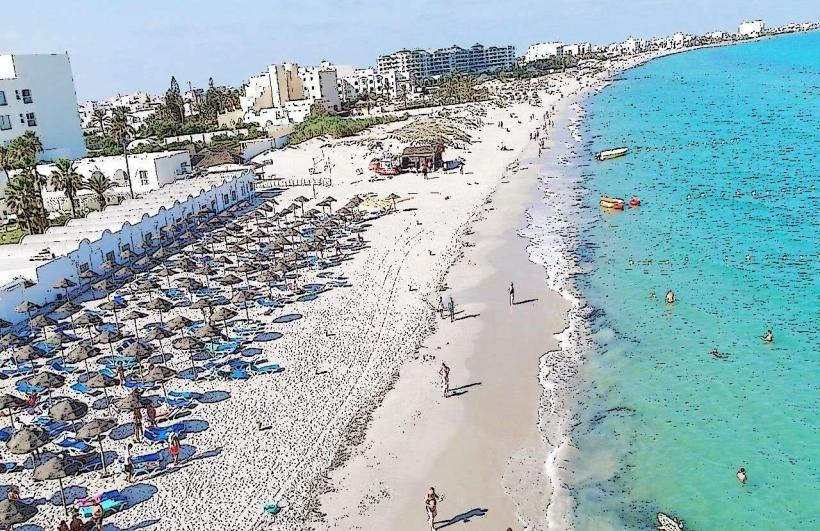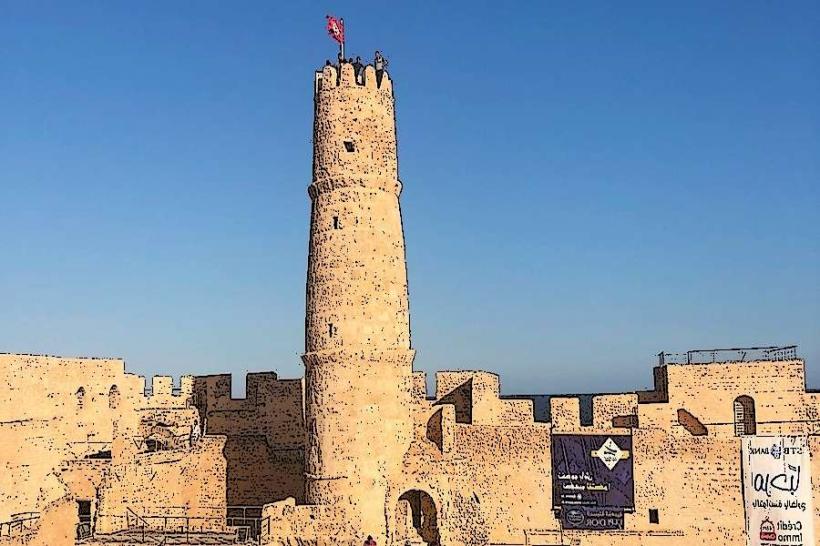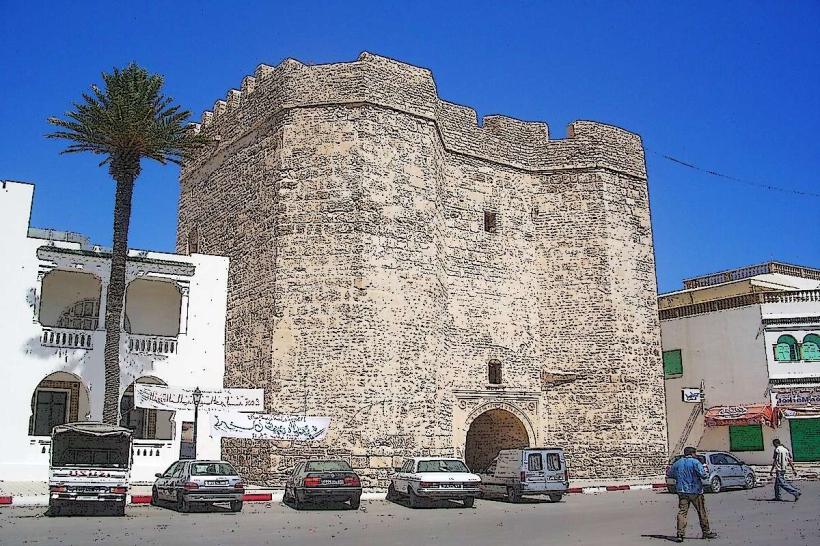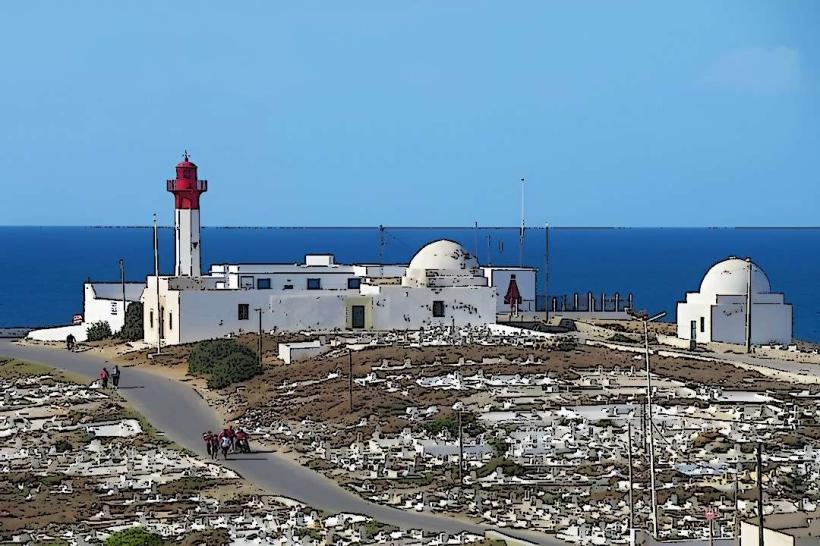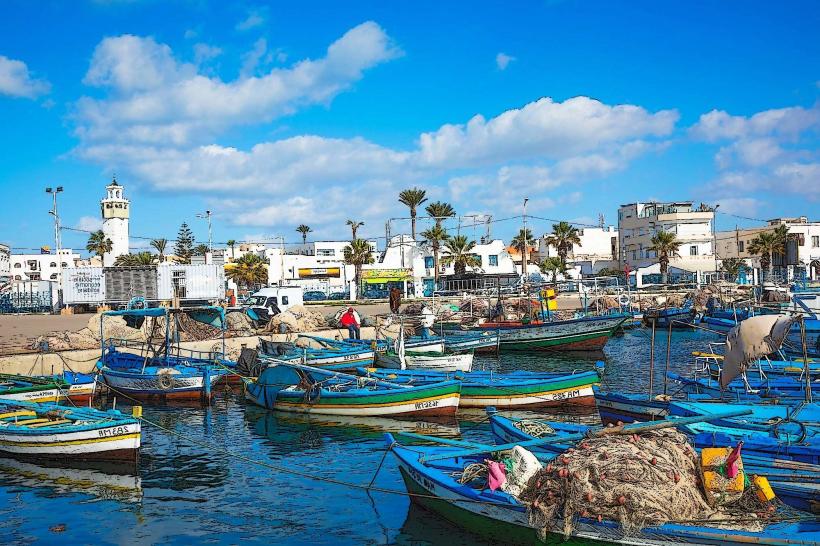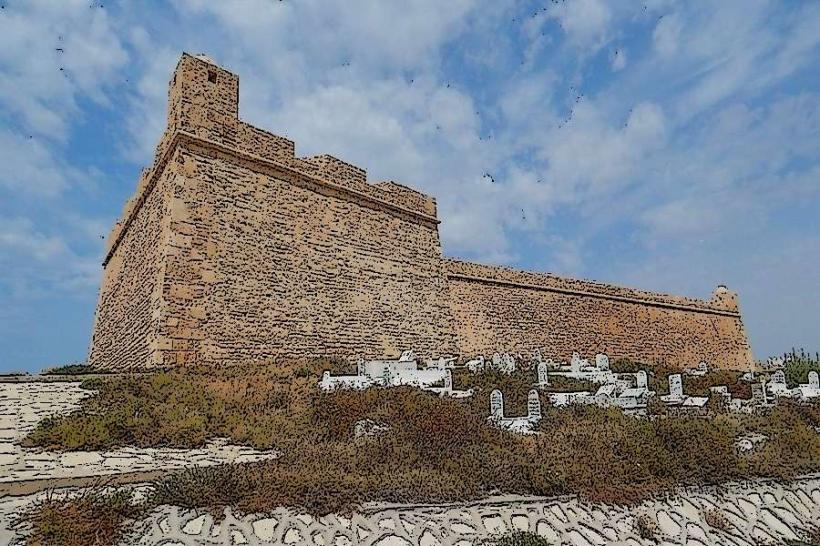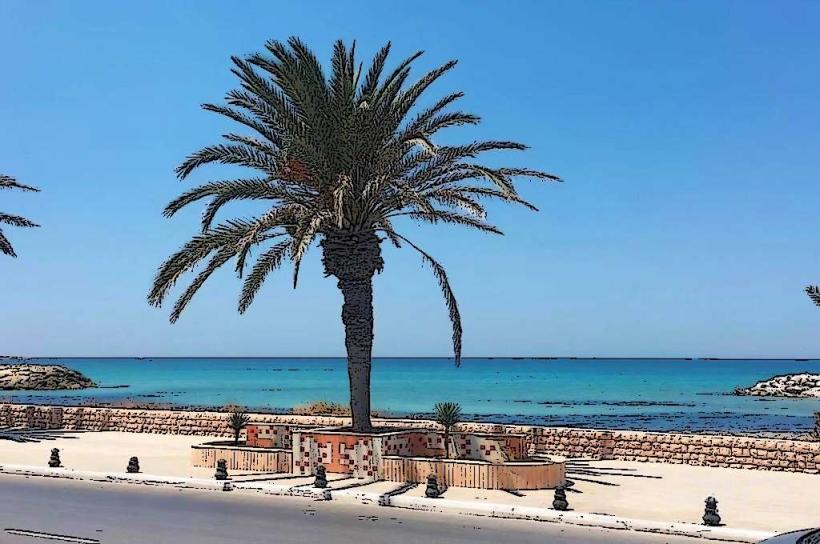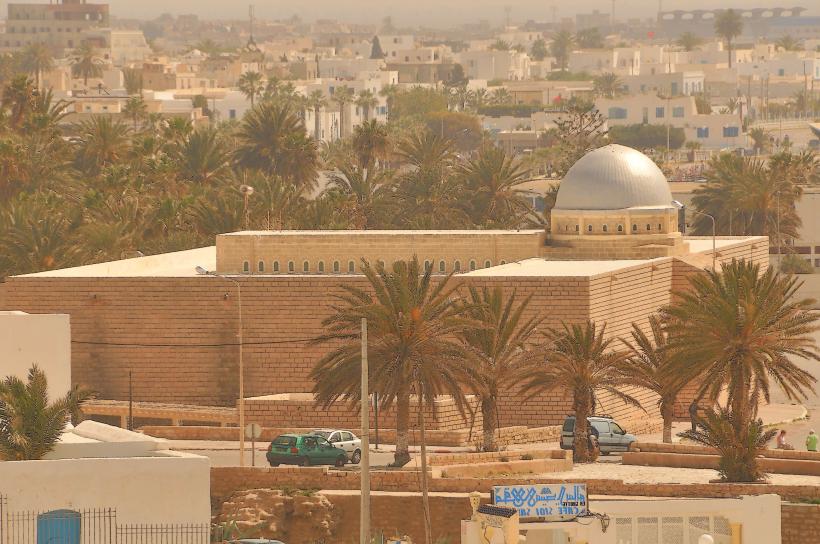Information
Landmark: Medina of MahdiaCity: Mahdia
Country: Tunisia
Continent: Africa
Medina of Mahdia, Mahdia, Tunisia, Africa
Overview
Perched on a slender peninsula along Tunisia’s eastern shore, the Medina of Mahdia stands as one of the country’s most storied ancient towns, its whitewashed arches and weathered stone walls steeped in history, also mahdia’s origins, its winding layout, and weathered stone walls reveal a city that for centuries served as both a political capital and a bustling hub of sea trade.Here’s a quick dive into its beginnings: in 916 AD, Abdallah al-Mahdi, the first Fatimid caliph, founded Mahdia and named it the capital, a fresh city by the sea meant to anchor his dynasty’s rule, at the same time they built the city with purpose, walls rising high to guard it, a stronghold meant to keep Fatimid rule firm across the region.It stayed the capital until 973 AD, when the Fatimids packed up and shifted their seat of power to bustling Cairo, Egypt, equally important roman and Punic Roots: Long before the Fatimids built here, people lived on this ground in both Punic and Roman times, leaving pottery shards and worn stone walls behind.People once called the ancient city Aphrodisium, after the goddess Aphrodite, and under Roman rule it became known as Cap Africa, its streets echoing with Latin voices, furthermore archaeological discoveries tell the story of its long maritime past, most famously the Mahdia shipwreck, found off the coast in the early 1900s with Greek sculptures and art from about 80 BC, their marble surfaces still bearing faint traces of sea salt, in a sense After the Fatimids headed east, Mahdia stayed fundamental under a string of Muslim rulers, among them the Zirids-who in the 11th and 12th centuries fended off wave after wave of Norman raids from Sicily, sails flashing white on the horizon, therefore in 1148, the Normans seized Mahdia for a short time, their banners snapping in the sea breeze, before the Almohads drove them out.Later, the Hafsids took control of the city, and the Ottomans followed, their banners snapping in the wind, to boot the Medina of Mahdia stands out for its deliberate, fortified layout, with Skifa el Kahla-the Black Gate-as its main entrance, first built in the 10th century and rebuilt in the 16th under Ottoman rule, its weathered stone still cool to the touch on a scorching afternoon.Thick stone walls loom overhead, and a cool, vaulted tunnel runs deep inside, built to keep intruders out, meanwhile it’s still one of North Africa’s best-kept medieval gates, its stone arch worn smooth by centuries of passing footsteps, somewhat Perched above the gate, a wide terrace opens to a sweeping view of the medina and the glittering sea, on top of that the ancient city stood behind towering stone walls, a few of which still cast long shadows in the streets today.Mahdia sat on a narrow peninsula, the sea wrapping around it on three sides, while sturdy stone walls guarded the stretch of land that led to town, in conjunction with the Great Mosque of Mahdia, built in 921 AD by the Fatimids, stands as a striking landmark of early Islamic architecture in the Maghreb, its pale stone walls catching the morning light, for the most part As it happens, It stands out for having no minaret, a choice that echoes the clean, geometric style favored by the Fatimids, meanwhile its massive entrance faces the sea head-on, built with the stern lines of a fortress rather than the curves of a traditional mosque, a design that speaks to the early Fatimid blend of faith and defense.The mosque suffered partial destruction more than once, rebuilt each time, and saw its most extensive restoration in the 20th century, when fresh stone gleamed against the older walls, in conjunction with fatimid Palace and Harbor: The grand Fatimid palace is gone now, but once it rose above the harbor, its ornate walls catching the glint of sunlight off the waves, slightly often You can still behold the aged harbor today, once a vital hub for warships and merchant vessels, its weathered docks smelling faintly of salt and tar, subsequently during the Fatimid period, a heavy chain boom stretched across the harbor entrance to guard it, its iron links clanking in the salt wind, more or less In the medina, you’ll find skilled hands weaving cloth, embroidering silk, and crafting jewelry-especially the gleaming gold pieces women wear for special occasions, moreover the medina’s markets are still buzzing, filled with handwoven carpets, fresh fish on ice, fragrant spices, and brightly painted ceramics.Daily Life: Unlike the polished, tourist-heavy medinas in Tunis or Sousse, Mahdia’s medina feels genuinely lived in-you’ll pass locals chatting over coffee and kids darting through narrow, sunlit alleys, in turn the houses gleam under their fresh whitewash, while doors stand out in deep blues and soft greens.Plenty of homes still show off Fatimid-inspired touches, from cool, shaded courtyards to graceful doorways framed by tall arches, along with religious and community sites: Beyond the Great Mosque, the medina holds minute zawiyas-quiet rooms scented with incense-and the tombs of saints that locals still visit.The medina sits on a slim, rocky peninsula that juts into the Mediterranean, its stone cliffs catching the light and giving the spot both striking views and a strong defensive edge, likewise from here, you can watch waves crash against the rocks and reach the harbor from either side.Bordj el Kebir is a 16th-century Ottoman fortress perched near the peninsula’s tip, where it watches over the glittering sea and the weathered timeworn harbor, after that it took the region of the ancient stone walls and served as the city’s shield against attacks from the sea, especially in the tense Ottoman-Habsburg years when cannons echoed across the harbor.Mahdia’s medina stands as proof of the Fatimid legacy in North Africa, a rare glimpse into their early urban planning, with narrow stone alleys still tracing the shapes they envisioned centuries ago, not only that it hasn’t earned UNESCO World Heritage status yet, but it’s celebrated across the country for its rich history and cultural importance, like the centuries-vintage stone arch at its entrance.Tunisia’s National Heritage Institute is working to preserve and restore its monuments, all while keeping the medina alive with the scent of fresh bread and the buzz of daily life, in addition though smaller and calmer than the bustling medinas of Tunis or Kairouan, Mahdia’s heart still pulses with history, shaped by its Fatimid past and framed by waves striking the rocky shore.It’s a locale where history brushes shoulders with daily life, as if the scent of fresh bread drifts past centuries-historic stone walls.
Author: Tourist Landmarks
Date: 2025-09-27

